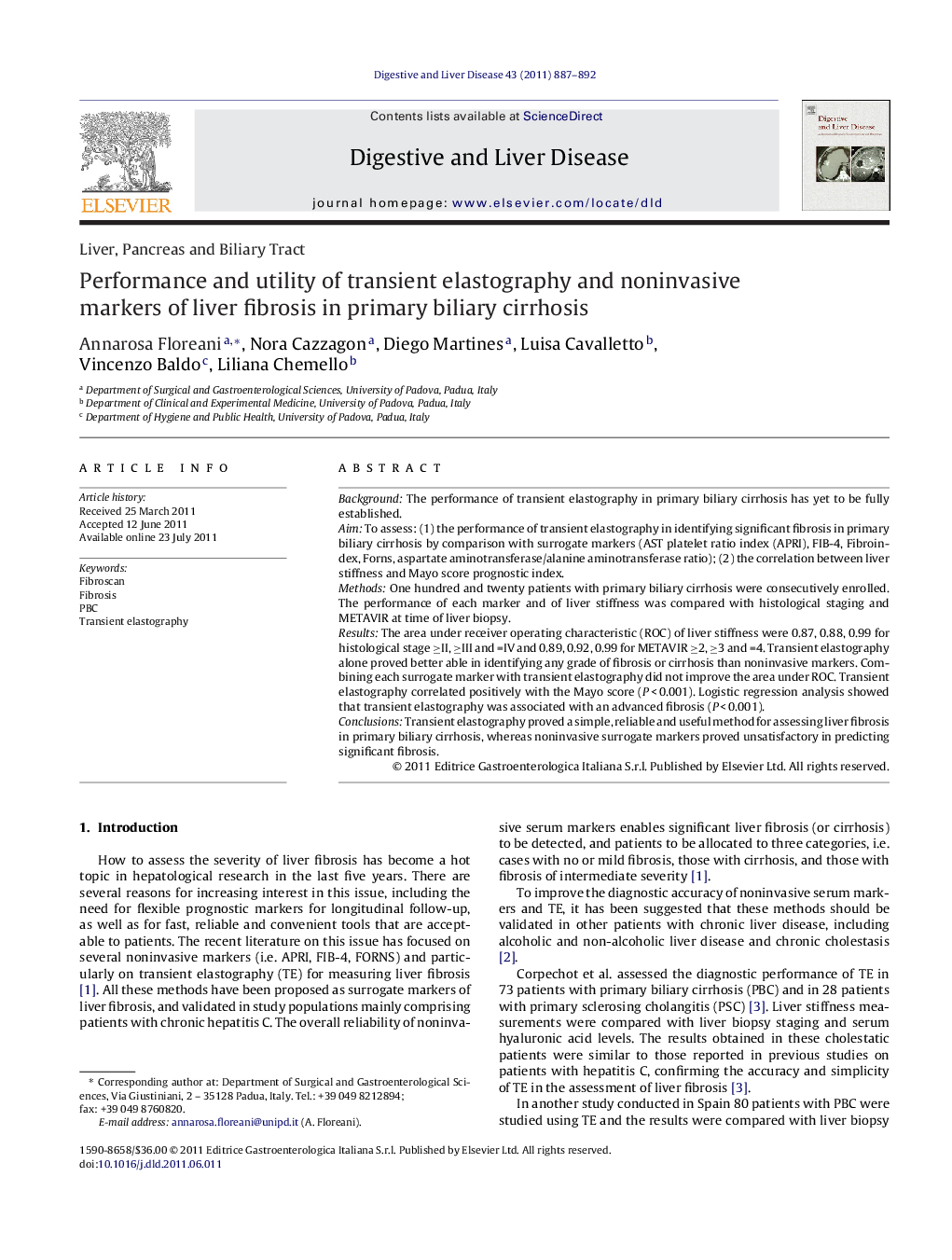| Article ID | Journal | Published Year | Pages | File Type |
|---|---|---|---|---|
| 3262829 | Digestive and Liver Disease | 2011 | 6 Pages |
BackgroundThe performance of transient elastography in primary biliary cirrhosis has yet to be fully established.AimTo assess: (1) the performance of transient elastography in identifying significant fibrosis in primary biliary cirrhosis by comparison with surrogate markers (AST platelet ratio index (APRI), FIB-4, Fibroindex, Forns, aspartate aminotransferase/alanine aminotransferase ratio); (2) the correlation between liver stiffness and Mayo score prognostic index.MethodsOne hundred and twenty patients with primary biliary cirrhosis were consecutively enrolled. The performance of each marker and of liver stiffness was compared with histological staging and METAVIR at time of liver biopsy.ResultsThe area under receiver operating characteristic (ROC) of liver stiffness were 0.87, 0.88, 0.99 for histological stage ≥II, ≥III and =IV and 0.89, 0.92, 0.99 for METAVIR ≥2, ≥3 and =4. Transient elastography alone proved better able in identifying any grade of fibrosis or cirrhosis than noninvasive markers. Combining each surrogate marker with transient elastography did not improve the area under ROC. Transient elastography correlated positively with the Mayo score (P < 0.001). Logistic regression analysis showed that transient elastography was associated with an advanced fibrosis (P < 0.001).ConclusionsTransient elastography proved a simple, reliable and useful method for assessing liver fibrosis in primary biliary cirrhosis, whereas noninvasive surrogate markers proved unsatisfactory in predicting significant fibrosis.
